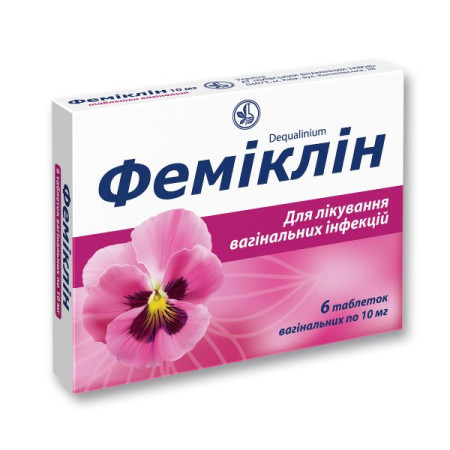Vasoket tablets 600 mg No. 30

Instructions for Vasoket tablets 600 mg No. 30
Composition
active ingredient: diosmine;
1 tablet contains 600 mg of diosmin;
excipients: povidone, microcrystalline cellulose, corn starch, magnesium stearate.
Dosage form
Pills.
Main physicochemical properties: Oblong tablets, grayish-yellow or light yellow in color, with a score on both sides.
Pharmacotherapeutic group
ATX code. Capillary stabilizing agents. Bioflavonoids. ATX code C05C A03.
Pharmacological properties
Pharmacodynamics
Diosmin increases the tone of the venous wall, normalizes vascular permeability, and has an angioprotective effect on the vascular wall.
Effect of diosmin on venous wall tone: enhancement of the vasoconstrictive effect of adrenaline, noradrenaline and serotonin in superficial veins of the hands and in an isolated large saphenous vein; increase in venous wall tone, determined by strain gauge plethysmography, and reduction of venous stasis; constrictive (narrowing) effect on veins was proportional to the administered dose of diosmin; decrease in mean venous pressure, both in superficial and deep vessels (confirmed by Doppler measurement in a double-blind, placebo-controlled study); increase in systolic and diastolic blood pressure in patients with postoperative orthostatic hypotension; prevention of complications after saphenous vein removal.
Protective effect of diosmin on the vascular wall: increase in capillary resistance proportional to the administered dose.
Pharmacokinetics
After oral administration, the drug is rapidly absorbed from the gastrointestinal tract and is detected in blood plasma after 2 hours.
The maximum concentration in the blood plasma is reached 5 hours after administration. It is evenly distributed and accumulates in all layers of the wall of the vena cava and subcutaneous veins of the lower extremities, to a lesser extent in the kidneys, liver, lungs and other organs. Selective accumulation of diosmin and/or its metabolites in venous vessels reaches a maximum 9 hours after administration and persists for 96 hours. Diosmin is excreted in the urine (79%), feces (11%), bile (2.4%). The presence of unchanged diosmin, diosmetin and other metabolites containing radioactive C14 was detected in feces, which indicates a complex mechanism of absorption and excretion of the product in the gastrointestinal tract (hepato-entero-hepatic circulation of diosmin and its metabolites).
Indication
To relieve symptoms caused by lymphovenous insufficiency, such as a feeling of heaviness in the lower extremities, pain, trophic disorders; in the complex treatment of exacerbation of hemorrhoids; as an additional method of treating increased capillary fragility, impaired microcirculation.
Contraindication
Hypersensitivity to the components of the drug.
Special safety precautions
The effectiveness of the drug will be maximum if the patient adheres to the correct work and rest regime. It is necessary to avoid prolonged standing or sitting, lifting heavy objects, wearing narrow shoes, prolonged exposure to the sun and hot rooms. Therapeutic exercises, wearing medical compression stockings contribute to the normalization of microcirculation and increase the effectiveness of the drug.
Interaction with other medicinal products and other types of interactions
Diosmin may enhance the vasoconstrictor effect of adrenaline and noradrenaline.
Application features
In case of worsening of symptoms associated with rectal varicose veins, taking diosmin does not exclude treatment used for other rectal diseases. Treatment should be short-term - up to 15 days. If during treatment with diosmin the symptoms associated with rectal varicose veins persist or worsen, a proctological examination should be performed and appropriate treatment should be applied.
Ability to influence reaction speed when driving vehicles or other mechanisms
Does not affect.
Use during pregnancy or breastfeeding
Experimental studies have not revealed any teratogenic effects of diosmin on the fetus. So far, in clinical practice, there have been no reports of any side effects when treating pregnant women with the drug. However, given that it is impossible to completely exclude a possible negative effect, the use of the drug is possible only for vital indications, if the expected therapeutic effect outweighs the possible risks. Treatment is carried out only as prescribed by a doctor and is canceled 2-3 weeks before delivery.
Due to the lack of data on the penetration of the drug into breast milk, it is not prescribed to women who are breastfeeding.
Method of administration and doses
For oral use.
For acute hemorrhoids: 2-3 tablets per day during meals for 7 days, if necessary, treatment is continued with 1 tablet once a day for up to 1-2 months. If after treatment the symptoms of the disease remain, it is necessary to consult a proctologist for correction of treatment. The maximum daily dose is 1800 mg (3 tablets).
Children
Not used.
Overdose
Symptoms of overdose are unknown. Presumably, hypersensitivity reactions are possible, requiring drug withdrawal and desensitization therapy.
Adverse reactions
Allergic reactions are possible, including skin rashes, itching; nausea, vomiting, dyspeptic disorders, which in rare cases require a break in treatment; headache.
Expiration date
3 years.
Storage conditions
Store at a temperature not exceeding 25 ° C. Keep out of the reach of children.
Packaging
15 tablets in a blister, No. 30 (15x2) in a pack.
Vacation category
Without a prescription.
Producer
Phyteo Laboratory.
Location of the manufacturer and its business address
11 rue de Montbazon 37260 MONT, France.
There are no reviews for this product.
There are no reviews for this product, be the first to leave your review.
No questions about this product, be the first and ask your question.


















